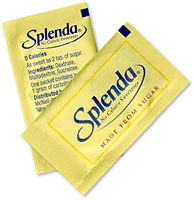Below are a couple of great sounding recipes for you to AVOID in order to give you some creative ideas about making meals with raw foods. We’ll also discuss blending and juicing and some of the great things you can do with this process which remains natural and raw.
Bad Recipes
The term “combo-abombo” was first used by R.C. Dini, author of Raw Courage World, who defined the term as a combination that is an abomination! It’s a poorly combined recipe, in other words.
Now, raw foods are supposed the best food choices but, because they are not cooked leave a lot to the imagination. And combining the wrong foods can result in gas, stomach upsets and even acid problems.
Not all raw food recipes are healthy. The problem is that many include too many nuts, lots of seeds or avocados and added oils. They may be tasty, but they aren’t what fits into the raw-foodist’s diet is success is to be achieved.
Here’s a recipe that may taste great but is NOT suitable for you. It’s called “Nut Loaf” and imitates meat loaf for dinner. Here’s the recipe and, with what you’ve already learned, you soon see how unhealthy it really is for you:
1 1/3 cups cashews
1 1/3 cups sunflower seeds
1 1/3 cups almonds
½ cup of oil
This creation serves two. Now let’s analyze the content of the nuts and oil used in this recipe. It will make it even clearer why you should avoid using this recipe:
|
1 1/3 cups cashews or about 150 grams = |
69.5 grams of fat |
|
1 1/3 cuts sunflower seeds, about 190 grams = |
94.2 grams of fat |
|
1 1/3 cups almonds or about 200 grams = |
104.4 grams of fat |
|
½ cup of olive oil which is about 125 grams = |
125.0 grams of fat |
|
Total Fat: |
393.1 |
|
Divided by 2 for two people: |
196.55 grams of fat for each person!! |
In other words, the entire dish is 100% fat! Totally what the raw-foodist wants to avoid. Low-fat is what is optimal with only about 5% or at most 6% of the dietary calories coming from fat.
If you add salt, spice, soy sauce, miso, onion, garlic, and other oils that taste good to the palate that is not accustomed to eating raw, natural foods, the situation worsens. You’ll only overeat and fail to obtain health and energy.
Good Recipes
Combine a few ingredients that are raw, natural and unseasoned and you can create a great cuisine. The general rules is 5-5-5 which means the dish should require:
- 5 or less ingredients
- 5 or fewer minutes to prepare
- cost less than $5.
What a great deal in time, purchases, and cost.
What about Juicing or Blending?
Juicing, simply squeezing the juice from fruits or watery vegetables, takes almost all the important fiber from the food making it less whole and more refined, therefore it isn’t as good for the body.
Raw-foodists should consume foods as close to nature as possible. This doesn’t mean that you should never juice any food. Blending rather than juicing is much better and creates a similar serving.
There’s a big problem with fruit juice that you should know about. The sugar in fruit juice is absorbed too quickly when separated from the fiber. Blending vegetables into a drinkable food source is much, much better.
Do not drink huge amount of blended green vegetables – a glass or two per day is plenty if you enjoy this way of getting nutrition. Eat the remainder of your food. If the juice has a strong flavor, such as parsley or kale, you can blend some mildly flavored vegetables, such as celery or fennel, into the mixture to dilute the stronger vegetable. You can add some carrot, beet or apple to create a good flavor.
One way to make juice better, if you do wish to juice something, is to add the pulp back into the final product. Drink about 70% of the product as juice, then add the remainder to the pulp and eat this mixture. You can add some chopped vegetables to the mixture and turn it into a tasty creation that is good for you and fits well in your raw-foodist diet.
Smoothies and Blended Food
Green smoothies created in your blender are great for you! You can prepare these in just a minute and create a tasty meal or snack. You’ll quickly learn what combination of vegetables, and perhaps a little fruit, tastes the best to you.
Carrot Juice
Some folks say carrot juice raises blood sugar and has other bad effects. There is no firm evidence of this that I have seen and carrots are a great, nutritious root vegetable. Of course, consuming huge amounts of carrot juice would be detrimental, but so would huge amount of any single food. A mixture of raw foods is needed to obtain the right balance of enzymes, vitamins and minerals.
If you like carrot juice or carrot smoothies, by all means have a glass! But don’t drink a quart, replacing other valuable raw foods by filling up on just carrots.


